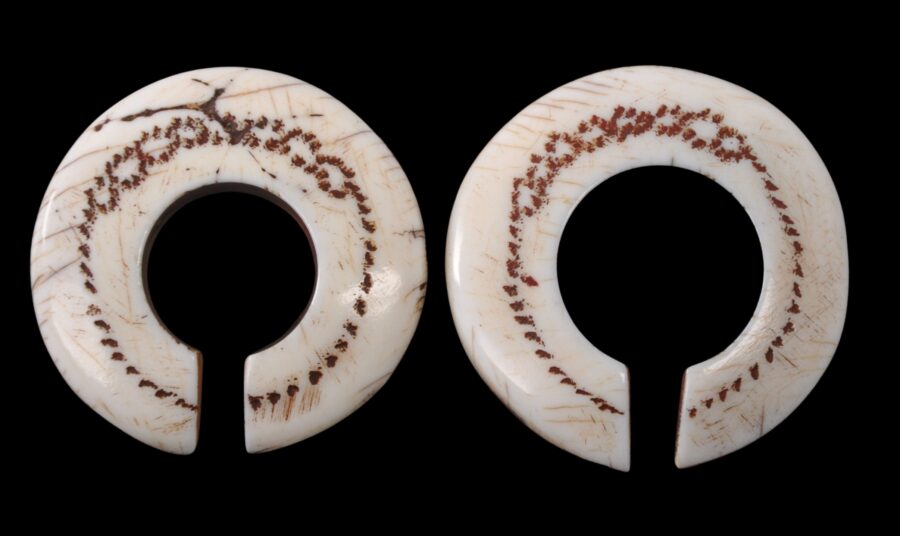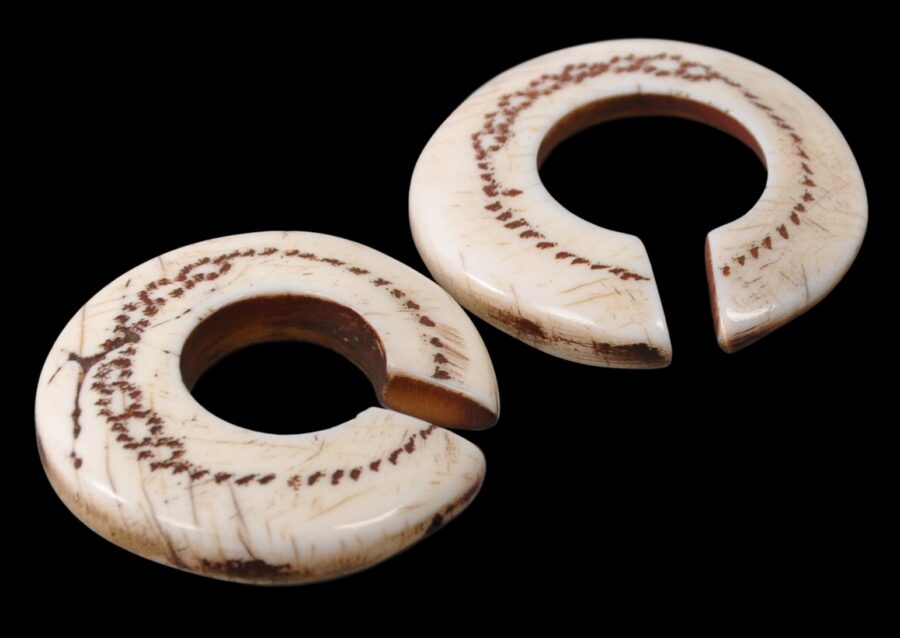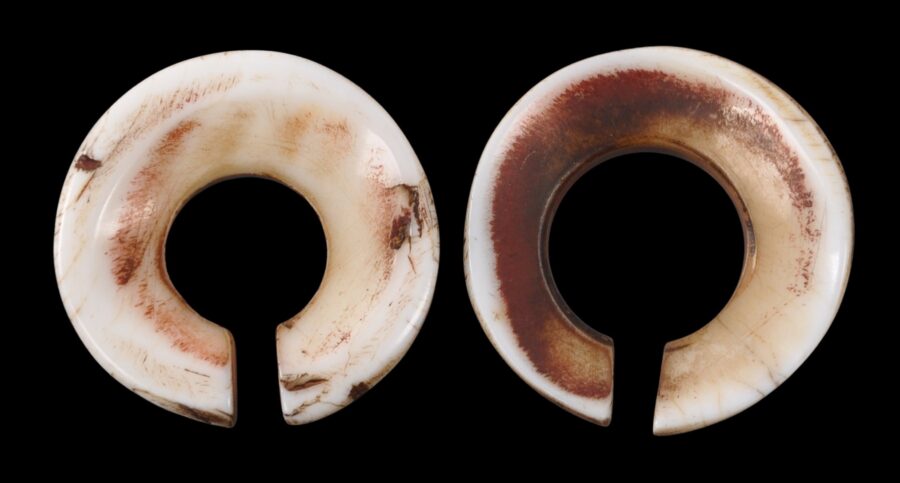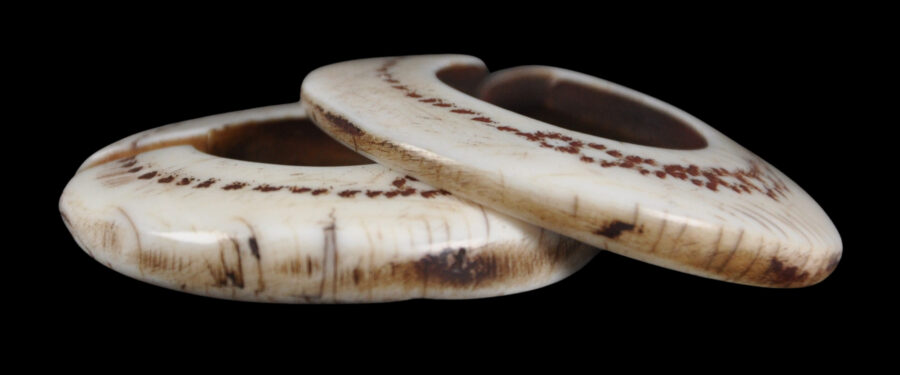This excellent pair of ‘C’-form ear ornaments or earrings of glossy shell that has been carved and engraved with lac highlights, is from the Lahaul (Lahul) and Spiti Districts of India’s northern Himachal Pradesh state in the Himalayas. Related ornaments were worn in Ladakh.
The two would have been worn through the ear lobes of women with particularly large or stretched pierced holes in their lobes.
The pair has the most splendid patina, with the contours being softened from years of handling. Each has further developed a beautiful polish and glossiness from being handled.
A dating of 19th century has been assigned but it could be earlier.
Ornaments made from shells were prestige pieces – there were no local supplies and the shell components were brought to the mountainous region by traders. Their imported status meant that they were expensive and so were considered luxury goods by the wearers. The marine origins of shell components and the association with fish meant that items made from such components were associated with fertility and so were ideal items for women to wear.
Lahaul (Lahul) and Spiti Districts are small in terms of population an even today have a combined population of slightly more than 30,000. The population is generally of Tibetan or related ancestry and the majority ethnic group is the Sino-Tibetan Kinnaur people. Generally, the locals follow a combination of Hinduism and Tibetan Buddhism of the Drukpa Kagyu order, or Tibetan Buddhism of the Gelugpa order.
The ear ornaments have come from an old collection in Scotland, likely to have been put together by a colonial administrator serving in the region. (Scots were commonly involved in the colonial administration of India.)
References
van Cutsem, A., A World of Head Ornaments: Africa, Asia Oceania, America, Skira, 2005.
Daalder, T., Ethnic Jewellery and Adornment: Australia, Oceania, Asia, Africa, Ethnic Art Press/Macmillan, 2009.
Geoffroy-Schneiter, B., Asian Jewellery: Ethnic Rings, Bracelets, Necklaces, Earrings, Belts, Head Ornaments, Skira, 2011.











